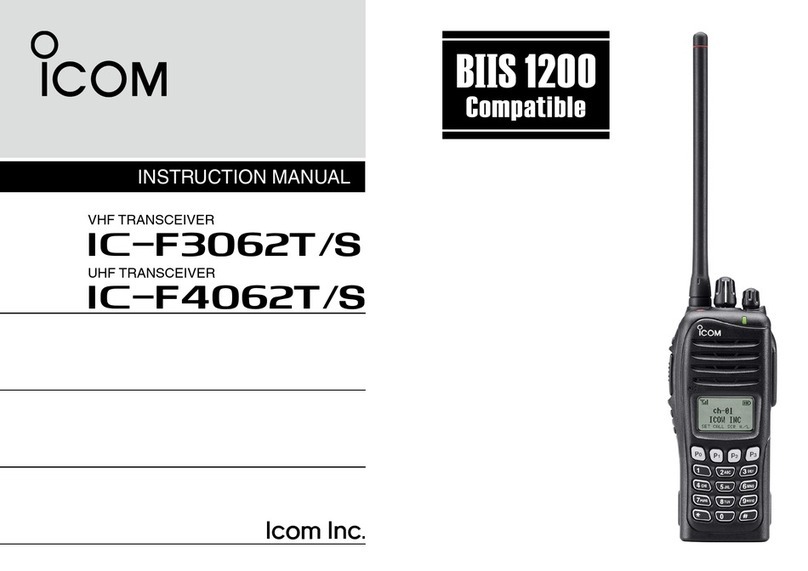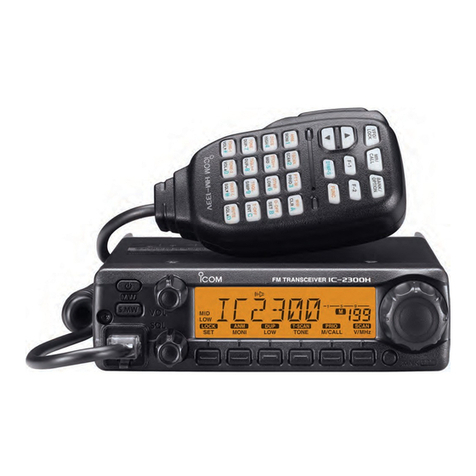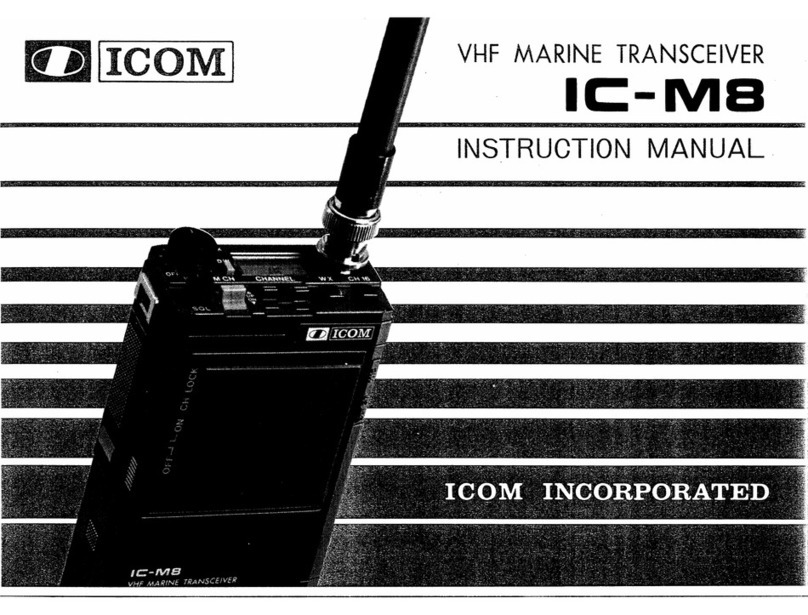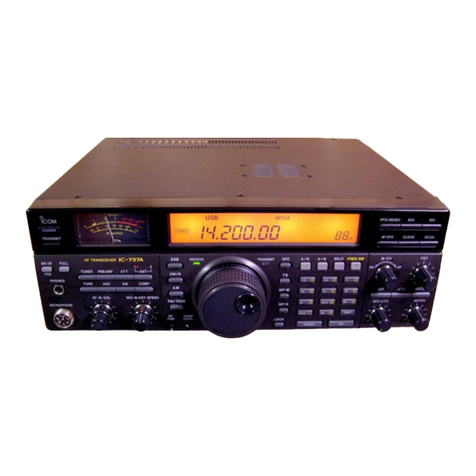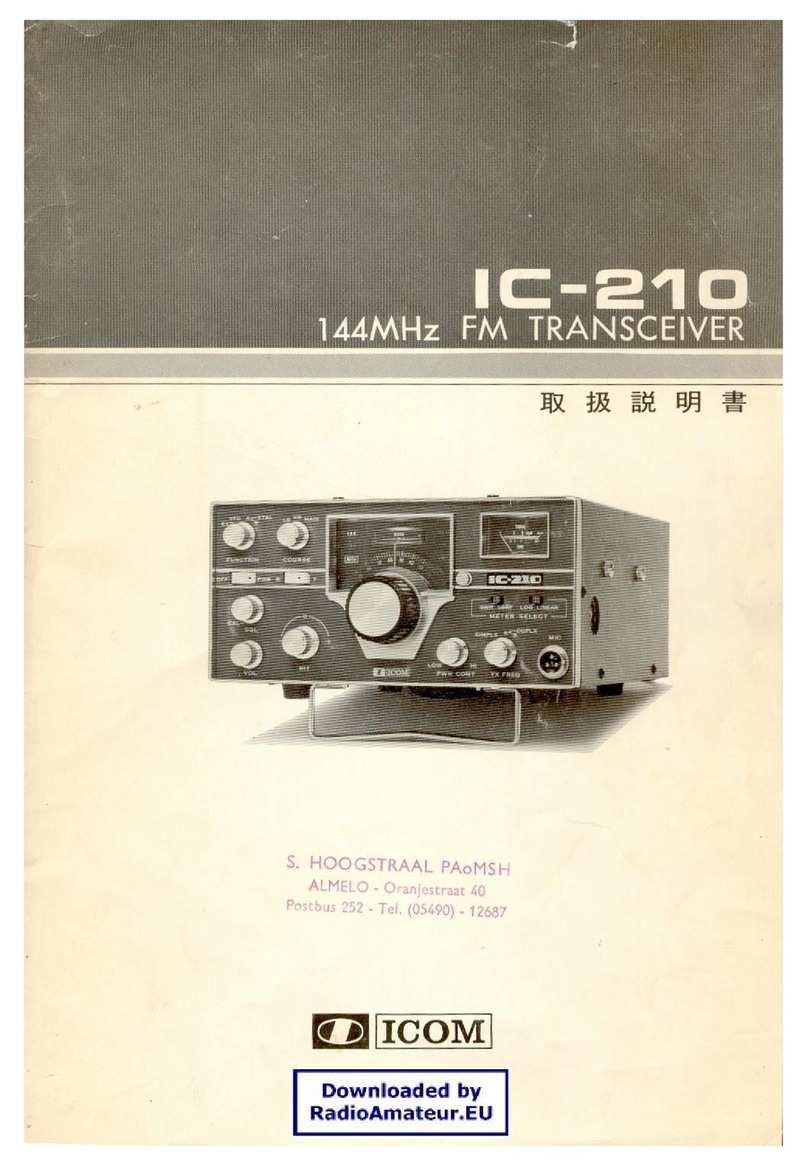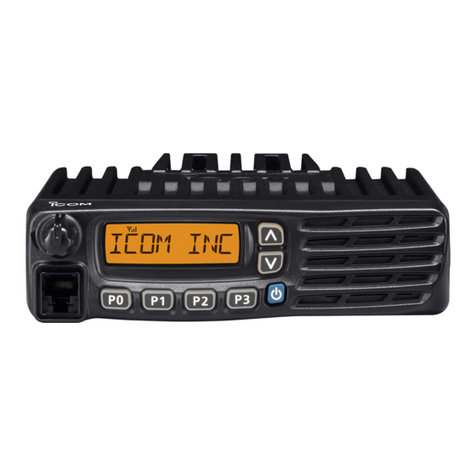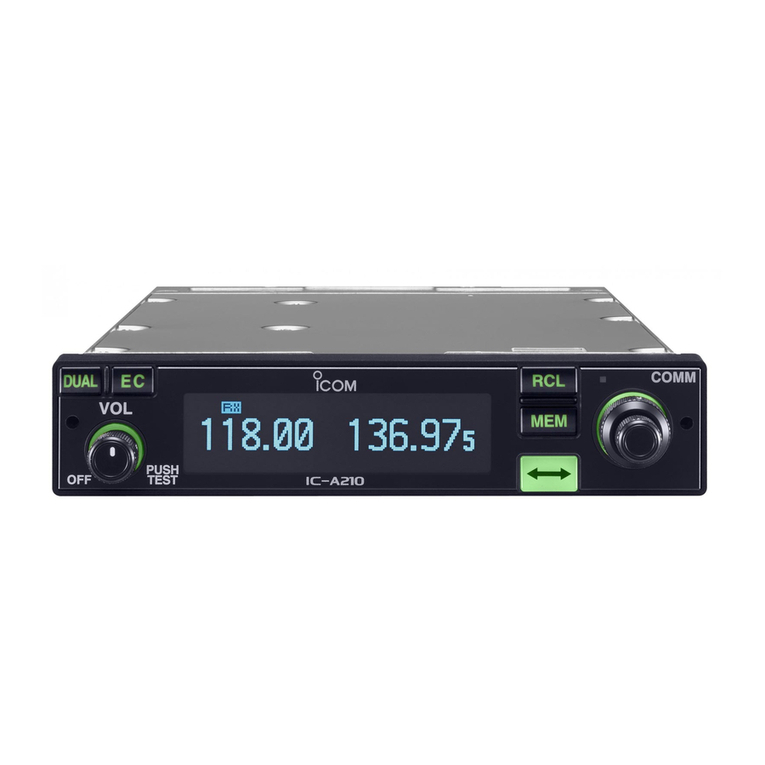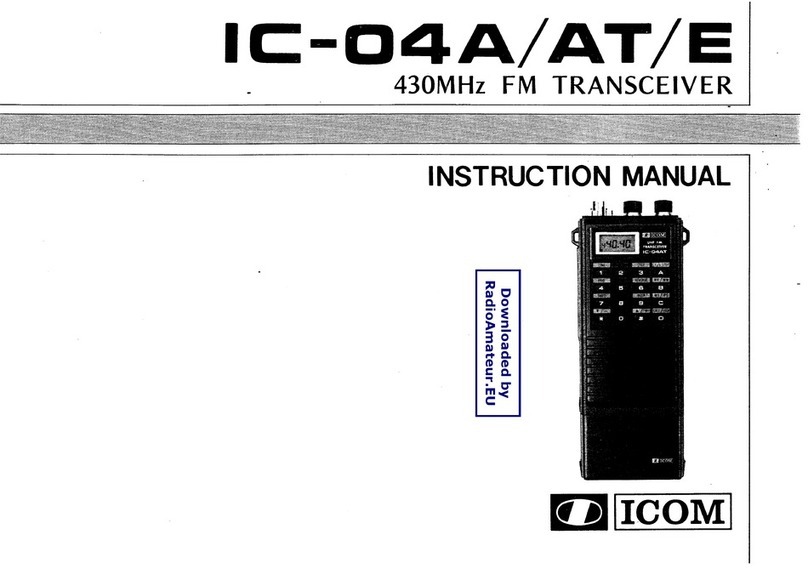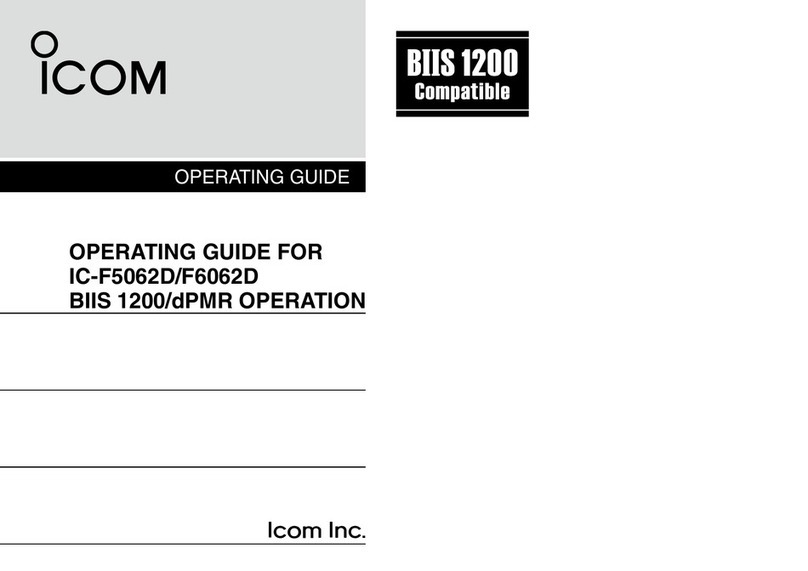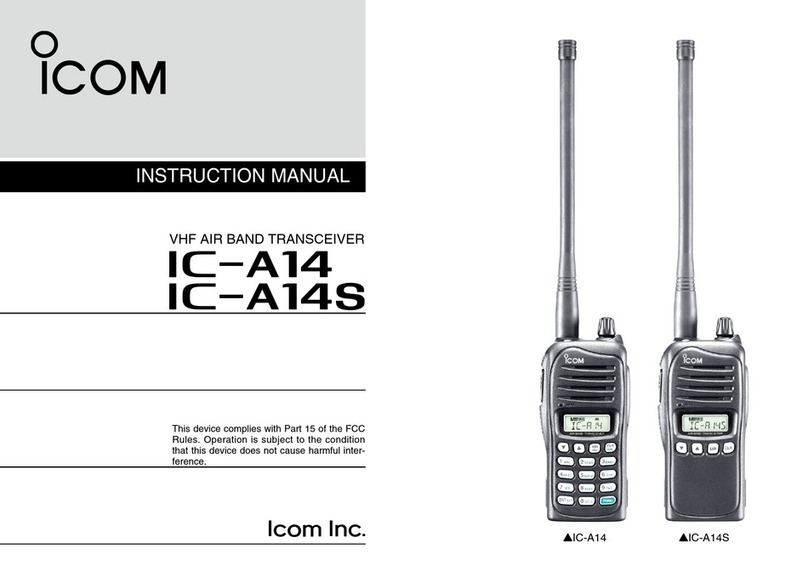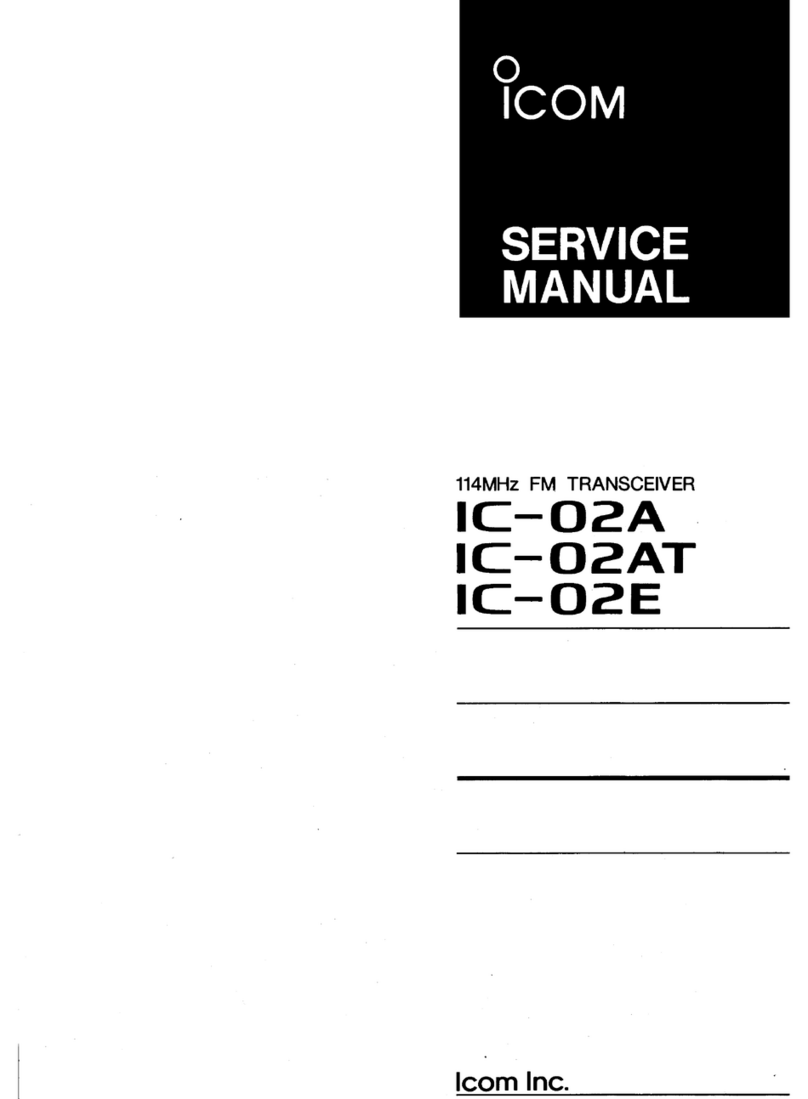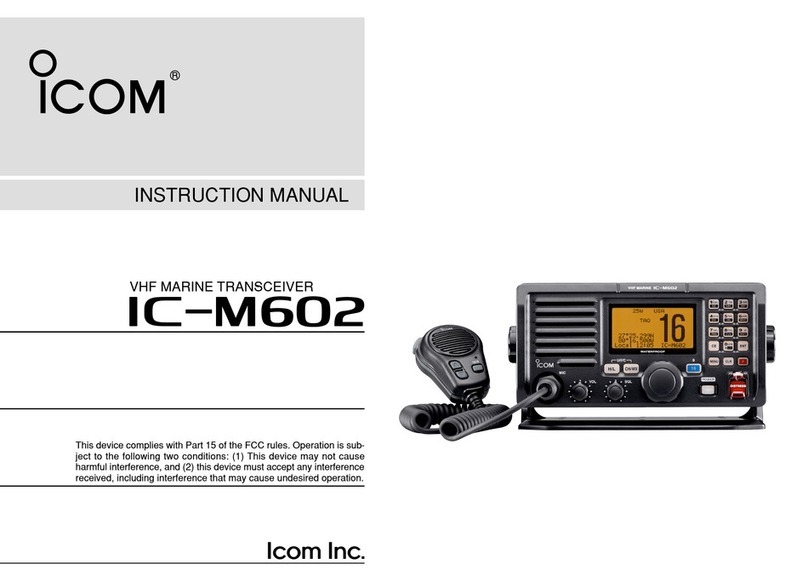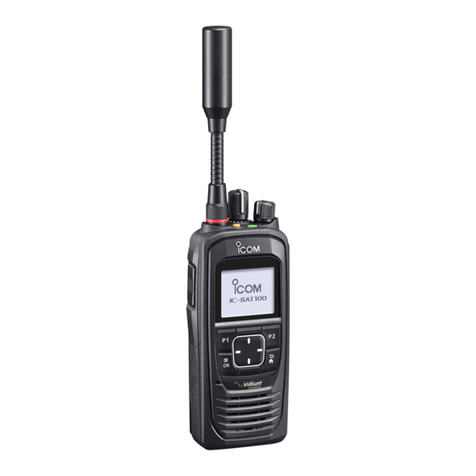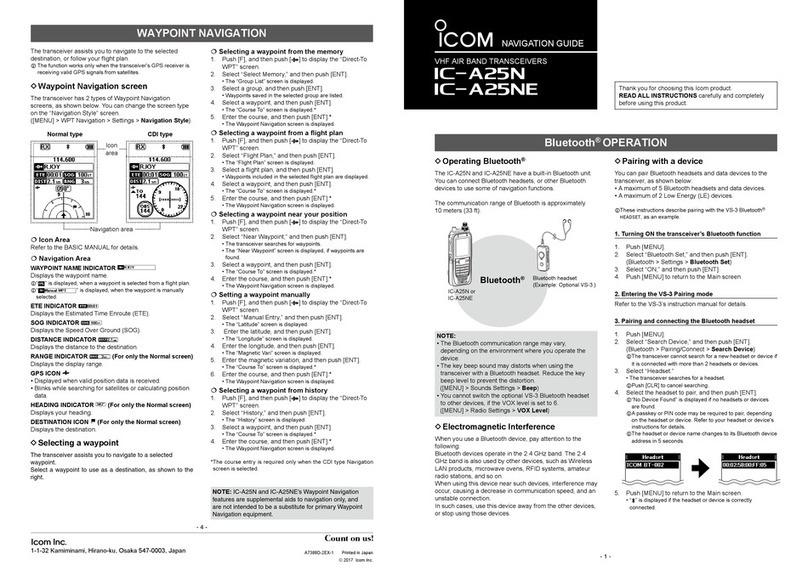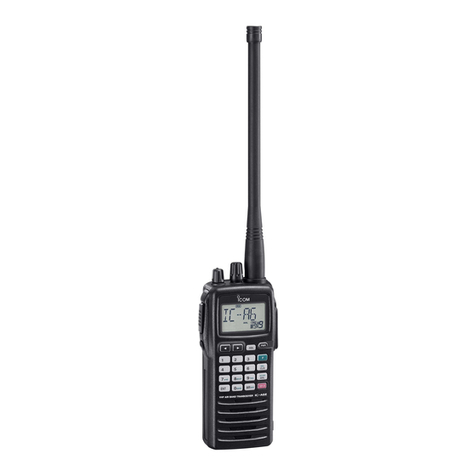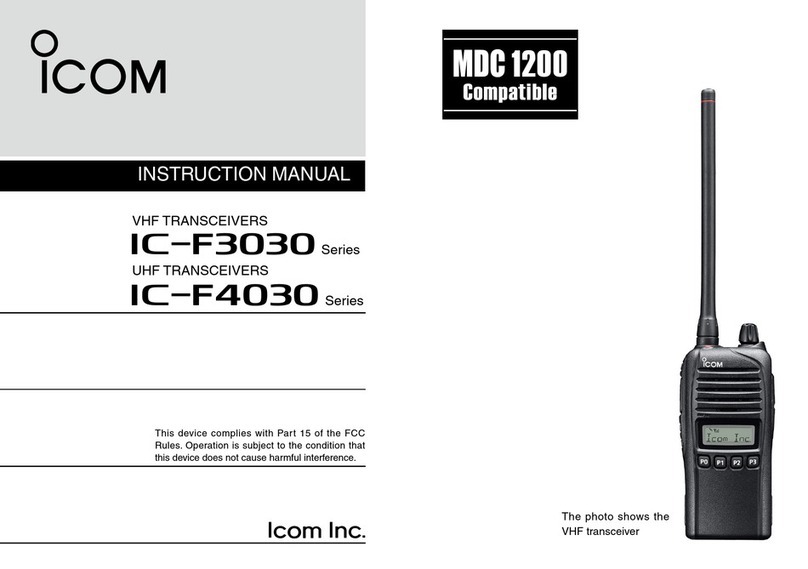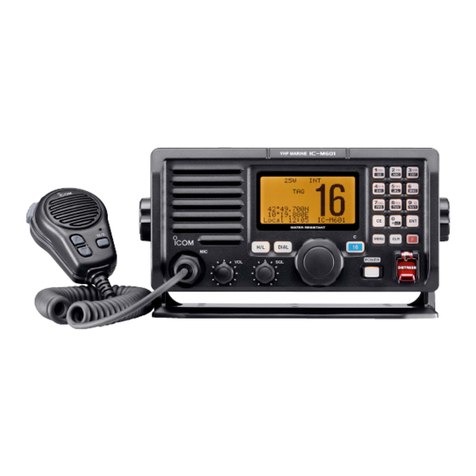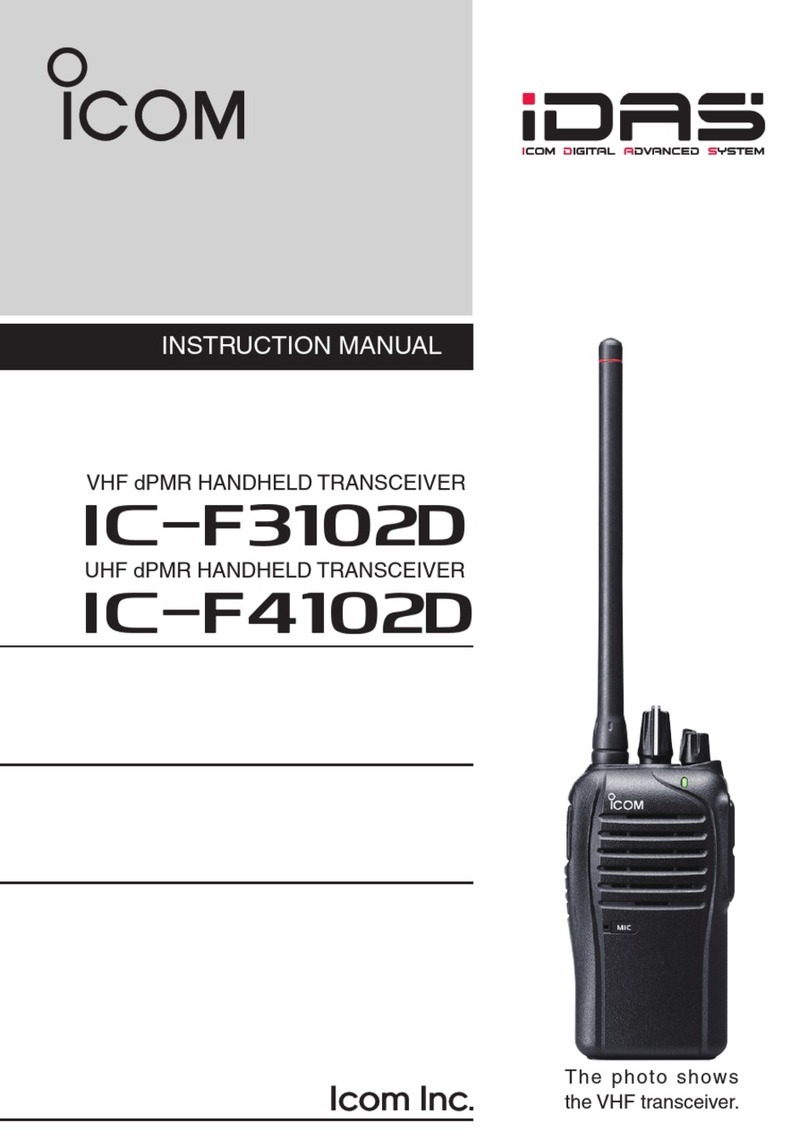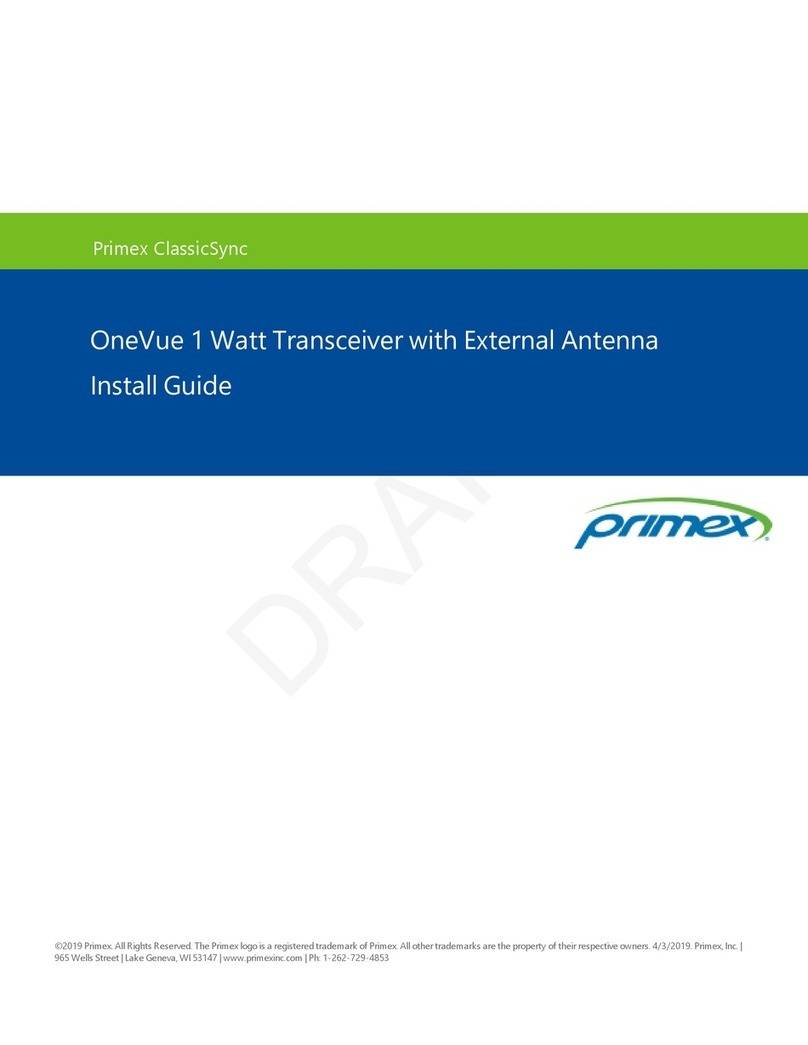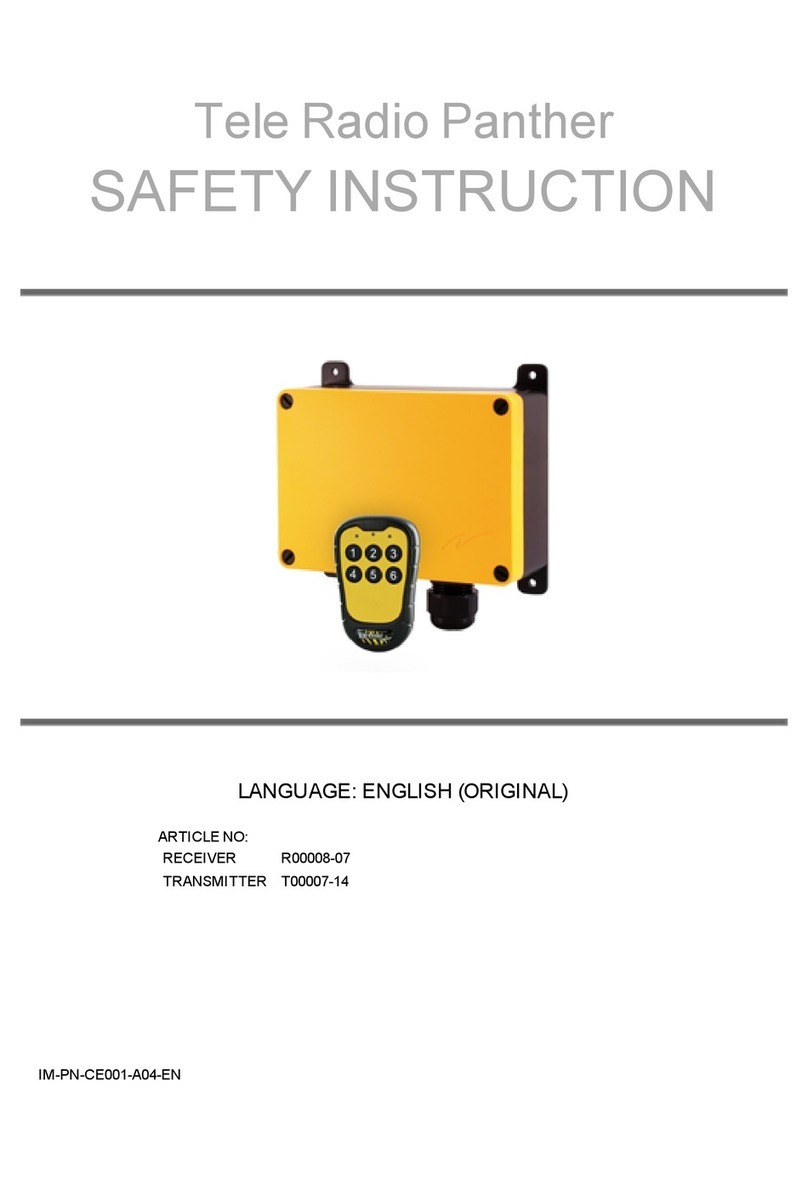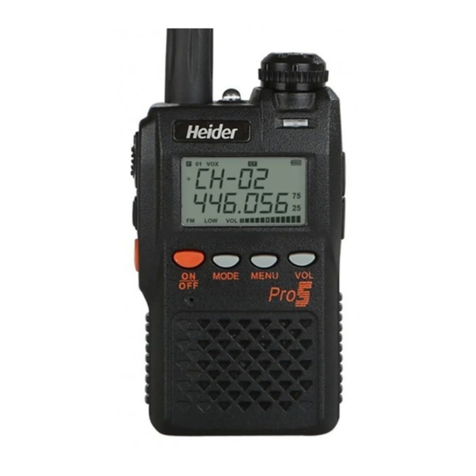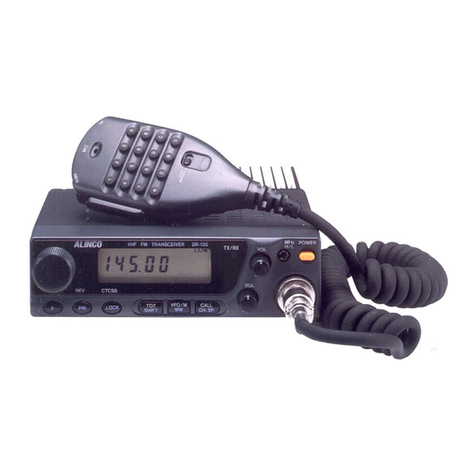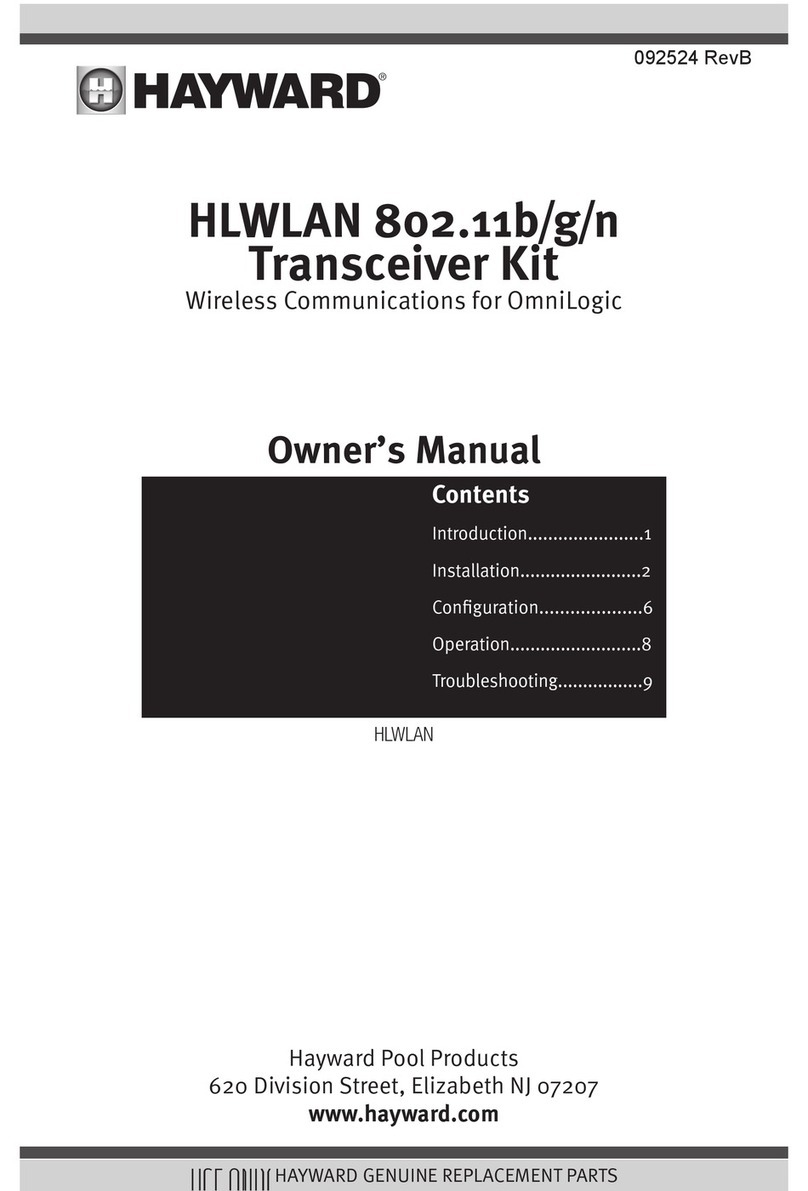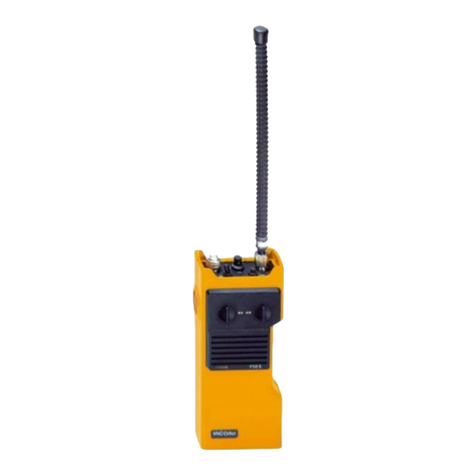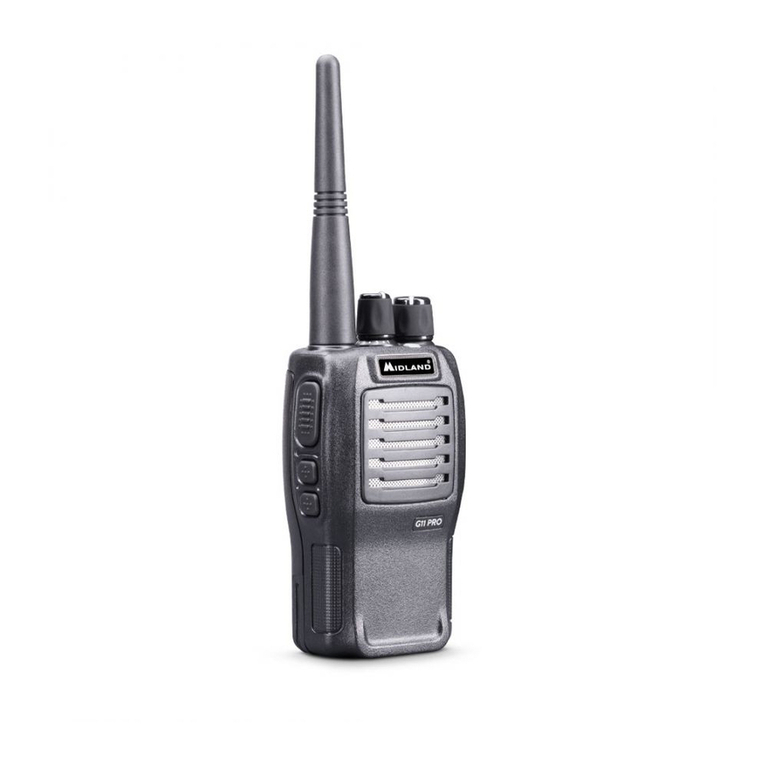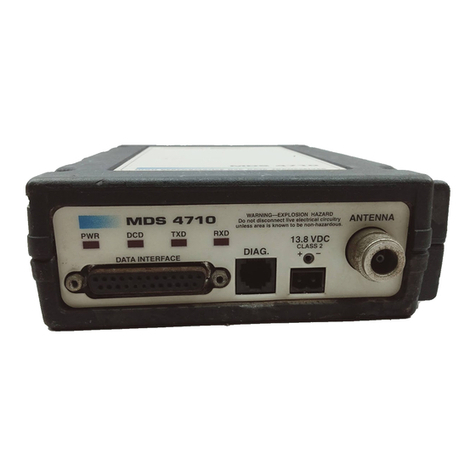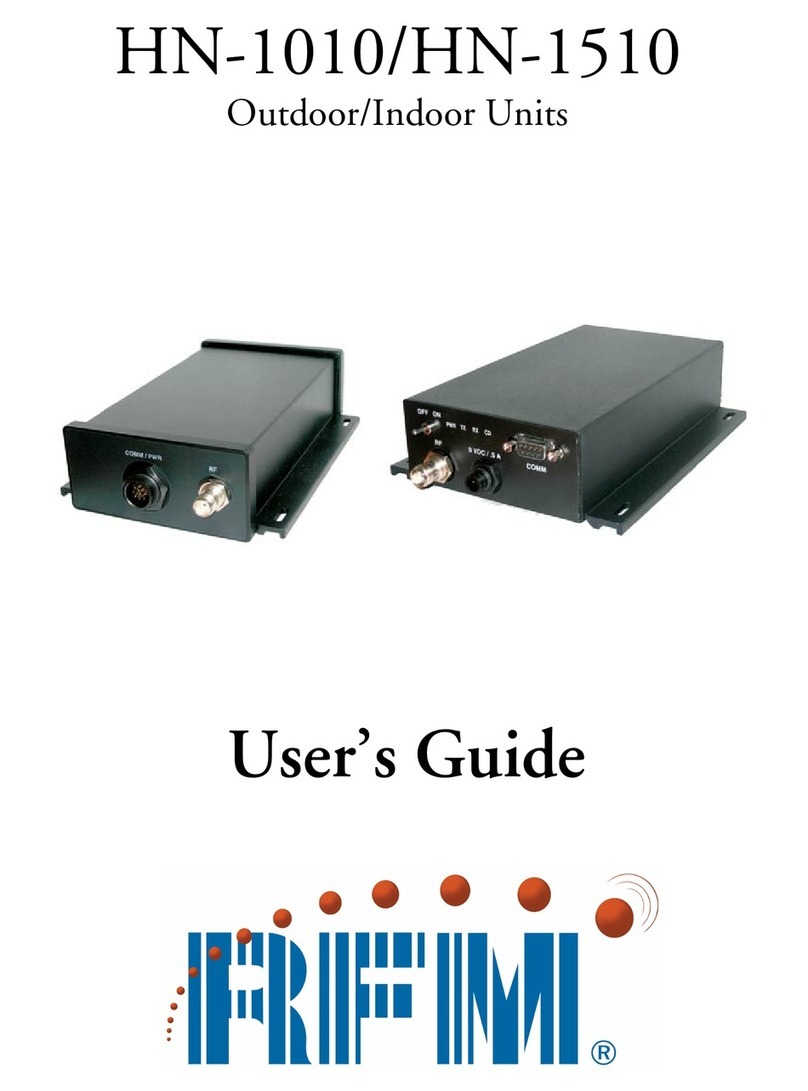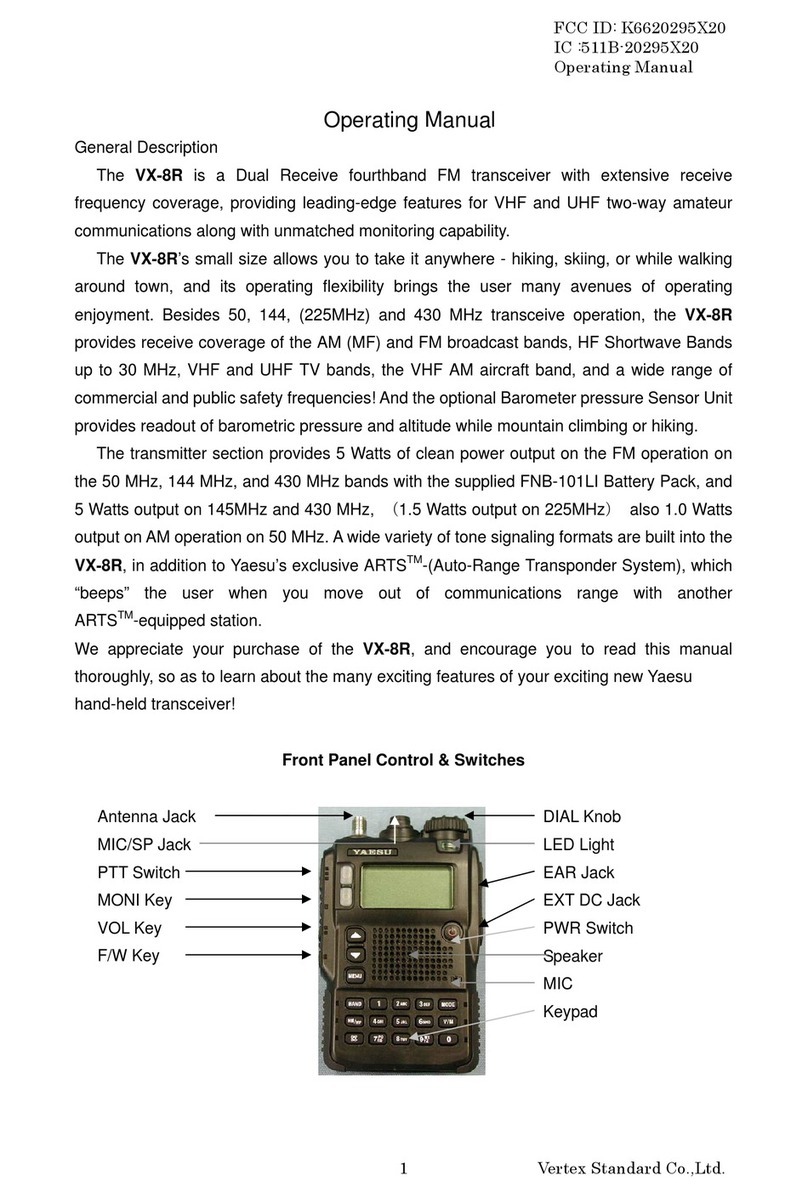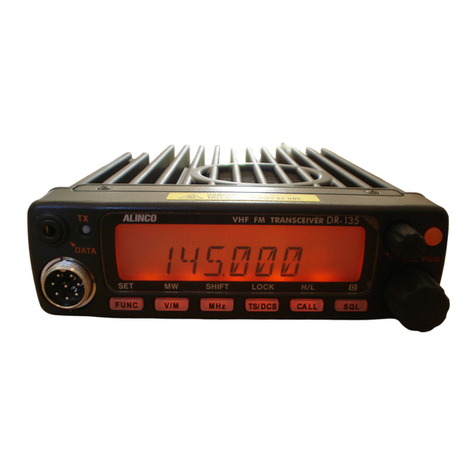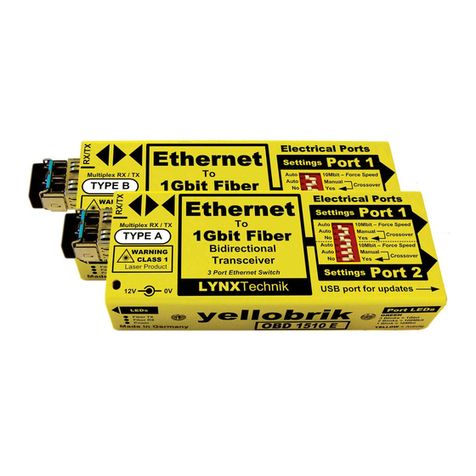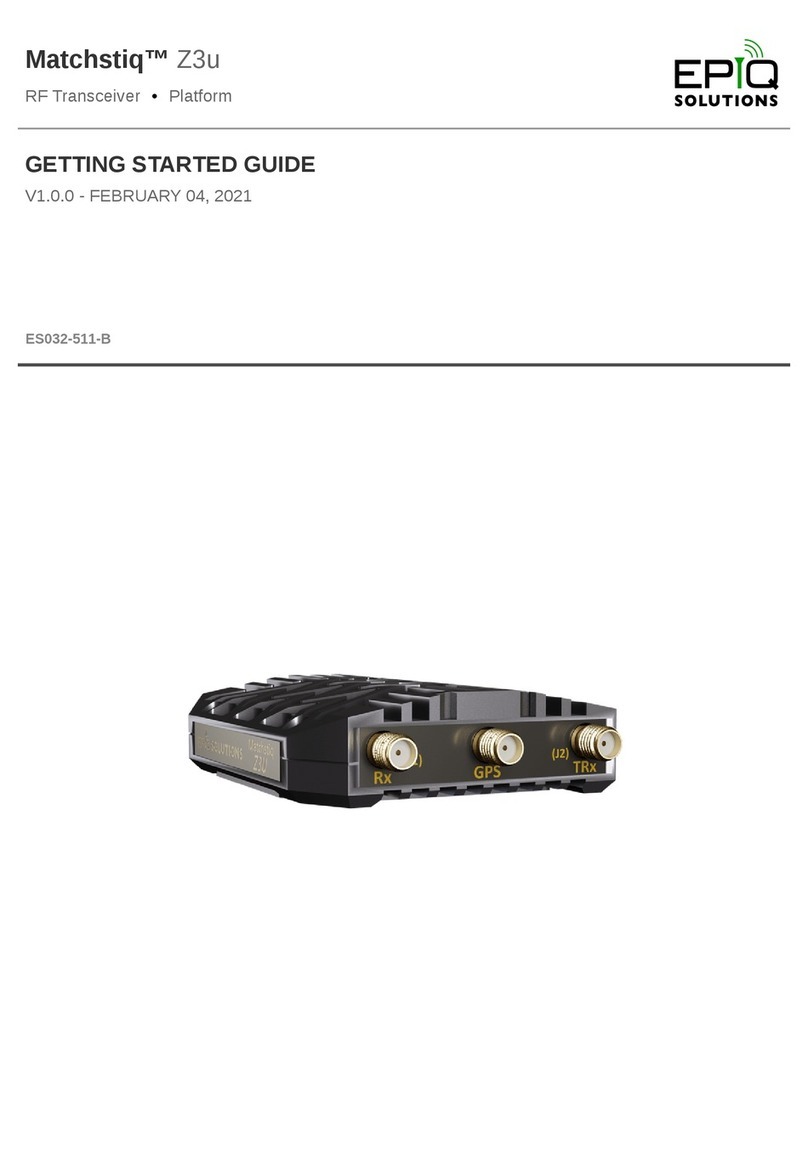Icom IC-M1 euro User manual

INSTRUCTION MANUAL
VHF MARINE TRANSCEIVER
iC- m1
This device complies with Part 15 of
the FCC Rules. Operation is subject to
the condition that this device does not
cause harmful interference.

i
RWARNING! NEVER hold the transceiver so that
the antenna is very close to, or touching exposed parts of the
body, especially the face or eyes, while transmitting. The
transceiver will perform best if the microphone is 2 to 4 in
(5 to 10 cm) away from the lips and the transceiver is verti-
cal.
MAKE SURE the flexible antenna and battery pack are se-
curely attached to the transceiver and that the antenna and
battery pack are dry before attachment. Exposing the inside
of the transceiver to water will result in serious damage to the
transceiver.
NEVER allow children to touch the transceiver.
NEVER charge battery packs except in the methods de-
scribed in this manual.
KEEP the transceiver at least 3.3 ft (1 m) away from the
ship’s navigation compass.
DO NOT use or place the transceiver in areas with temper-
atures below –4°F (–20°C) or above +140°F (+60°C) or, in
areas subject to direct sunlight, such as the dashboard.
AVOID the use of chemical agents such as benzine or al-
cohol when cleaning, as they may damage the transceiver
surfaces.
BE CAREFUL! The transceiver rear panel will become
hot when operating continuously for long periods.
After exposure to saltwater, clean the transceiver thoroughly
with fresh water to avoid corrosion.
CAUTIONS
IMPORTANT
READ ALL INSTRUCTIONS carefully and completely
before using the transceiver. SAVE THIS INSTRUCTION MANUAL — This in-
struction manual contains important operating instructions for
the IC-M1.

IMPORTANT ........................................................................ i
CAUTIONS .......................................................................... i
TABLE OF CONTENTS ..................................................... ii
1 PANEL DESCRIPTION ............................................. 1–3
■Front panel ................................................................. 1
■Top and side panels ................................................... 2
■Function display ......................................................... 3
2 BASIC OPERATION ................................................. 4–9
■Operating rules .......................................................... 4
■Channel selection ...................................................... 5
■Lock function .............................................................. 6
■Adjusting the squelch level ........................................ 6
■Receiving and transmitting ........................................ 7
■Optional voice scrambler operation ........................... 8
■Call channel programming ......................................... 9
■Automatic backlighting ............................................... 9
3 DUALWATCH/TRI-WATCH ......................................... 10
■Description ............................................................... 10
■Operation ................................................................. 10
4 SCAN OPERATION .............................................. 11–12
■Scan types ............................................................... 11
■Setting tag channels ................................................ 12
■Starting a scan ......................................................... 12
5 SET MODE ........................................................... 13–14
■SET mode programming .......................................... 13
■SET mode items ...................................................... 13
6 BATTERY CHARGING ......................................... 15–16
■Battery cautions ....................................................... 15
■Battery charging ...................................................... 15
7 UNPACKING AND ACCESSORY ATTACHMENT ..... 17
8 TROUBLESHOOTING ................................................ 18
9 CHANNEL LIST .......................................................... 19
10 SPECIFICATIONS AND OPTIONS ............................ 20
■Specifications ........................................................... 20
■Options .................................................................... 20
TABLE OF CONTENTS
ii

PANEL DESCRIPTION
1
1
■Front panel
FUNCTION DISPLAY (p. 3)
DUALWATCH/TRI-WATCH SWITCH
[DW•TRI](p. 10)
•Starts dualwatch when pushed momentarily.
•Starts tri-watch when pushed for 1 sec.
•Stops dualwatch/tri-watch when either is ac-
tivated.
SCAN SWITCH [SCN•SCRM]
•Starts and stops normal or priority scan
when tag channels are programmed. (p. 12)
•Activates an optional voice scrambler func-
tion when pushed for 1 sec. (p. 8)
TAG SWITCH [TAG•ALL CLR]
•Sets the displayed channel as a tag
(scanned) channel when pushed. (p. 12)
•Clears all tag channels in the selected regu-
lar channel when pushed for 3 sec. (p. 12)
TRANSMIT POWER/LOCK SWITCH
[H/L•LOCK]
•Toggles high power and low power (1 W)
when pushed. (p. 7)
•While pushing [SQL], push this key to select
extra low power (150 mW). (p. 7)
•Toggles the lock function ON and OFF when
pushed for 1 sec. (p. 6)
CHANNEL/WEATHER CHANNEL
SWITCH [CH/WX•U/I/C]
•Selects and toggles the regular channels
and weather channel when pushed mo-
mentarily. (pgs. 5, 6)
•Selects one of 3 regular channels in se-
quence when pushed for 1 sec. (p. 5)
- International, U.S.A. and Canadian channels
are available for regular channels.
CHANNEL 16 SWITCH [16•9]
•Selects channel 16 when pushed. (p. 5)
•Selects the call channel when pushed for
1 sec. (p. 5)
•Enters call channel write mode when the
call channel is selected and this switch is
pushed for 3 sec. (p. 9)

BATTERY PACK RELEASE BUTTON
To remove the battery pack:
Push and hold the battery release button
downwards, then open the battery pack as
shown below.
To attach the battery pack:
Mate the notched ends of the transceiver
and the battery pack, and click the battery
pack into place.
1
PANEL DESCRIPTION
2
■Top and side panels
PTT SWITCH [PTT]
Push and hold to transmit; release to re-
ceive. (p. 7)
SQUELCH/MONITOR SWITCH [SQL]
•Opens the squelch and monitors the op-
erating channel while being pushed.
•Sets the squelch level with the channel
selector. (p. 6)
ANTENNA CONNECTOR (p. 17)
Connects the supplied antenna.
CHANNEL SELECTOR [CH]
•Sets an operating channel during normal
operation. (pgs. 5, 6)
•Sets a squelch threshold level while
pushing [SQL]. (p. 6)
•Checks tag channels or changes scan-
ning direction during scan. (p. 12)
•Selects the set mode contents in SET
mode. (pgs. 13, 14)
•Selects the optional scrambler code
when [SCN•SCRM] is pushed and held.
(p. 8)
VOLUME CONTROL [OFF/VOL]
Turns power ON and adjusts the audio
level. (p. 7)

BATT
CALL LOW
WX DUP
USA
INT
CAN
BUSYTX
SCRM
DUAL TRI
ALT SCAN
TAG
LOW BATTERY INDICATOR (p. 15)
Blinks when the battery voltage drops to
approx. 6 V or below. The attached battery
pack requires charging in this case.
■Function display
1PANEL DESCRIPTION
3
CALL CHANNEL INDICATOR (p. 5)
Appears when a call channel is selected.
TRANSMIT INDICATOR (p. 7)
Appears while transmitting.
LOCK INDICATOR (p. 6)
Appears while the lock function is activated.
WEATHER ALERT INDICATOR (p. 14)
Appears while the weather alert function is
activated; blinks when alert tone is received.
SCAN INDICATOR (pgs. 12, 14)
Blinks while scanning; appears when the
auto scan function is in standby.
DUALWATCH/TRI-WATCH INDICATORS
“DUAL” appears during dualwatch; “TRI” ap-
pears during tri-watch. (p. 10)
DUPLEX INDICATOR
Appears when a duplex channel is selected.
SCRAMBLER INDICATOR (p. 8)
Appears when the optional voice scrambler
is activated.
SCRAMBLE CODE READOUT (p. 8)
Shows the scrambler code while setting.
TAG CHANNEL INDICATOR (p. 12)
Appears when a tag channel is selected.
CHANNEL INDICATORS (pgs. 5, 6)
Indicate whether a U.S.A., international,
Canadian or weather channel is selected.
CHANNEL NUMBER READOUT
•Indicates the selected operating channel
number. (pgs. 5, 6)
•In SET mode, indicates the selected con-
dition. (pgs. 13, 14)
LOW POWER INDICATOR (p. 7)
•Appears when low power is selected.
•Blinks when extra low power is selected.
BUSY INDICATOR (p. 7)
Appears when receiving a signal or when
the squelch opens.

BASIC OPERATION 2
4
Inquire through your dealer or the appropriate government
agency for a Ship-Radiotelephone license application. This
government-issued license states the call sign which is your
craft’s identification for radio purposes.
(2) OPERATOR’S LICENSE
A Restricted Radiotelephone Operator Permit is the license
most often held by small vessel radio operators when a radio
is not required for safety purposes.
The Restricted Radiotelephone Operator Permit must be
posted or kept with the operator. Only a licensed radio opera-
tor may operate a transceiver.
However, non-licensed individuals may talk over a transceiver
if a licensed operator starts, supervises, ends the call and
makes the necessary log entries.
Keep a copy of the current government rules and regulations
handy.
■Operating rules
•PRIORITIES
1Read all rules and regulations pertaining to priorities and
keep an up-to-date copy handy. Safety and distress calls
take priority over all others.
2You must monitor channel 16 when you are not operating
on another channel.
3False or fraudulent distress signals are prohibited and pun-
ishable by law.
•PRIVACY
1Information overheard but not intended for you cannot law-
fully be used in any way.
2Indecent or profane language is prohibited.
•RADIO LICENSES
(1) SHIP STATION LICENSE
You must have a current radio station license before using the
transceiver. It is unlawful to operate a ship station which is not
licensed.

■Channel selection
DChannel 16
Channel 16 is the distress channel. It is used for establishing
initial contact with another station and for emergency com-
munications. Channel 16 is monitored during dualwatch/
tri-watch. While standing by you are required to monitor chan-
nel 16.
DChannel 9 (Call channels)
Channel 9 is the pleasure call channel. Each regular channel
group has separate call channels. In addition, each call chan-
nel is monitored during tri-watch. The call channels can be
programmed (p. 9) and are used to store your most often-
used channels in each channel group for quick recall.
•Push [16•9] for 1 sec. to select
the call channel of the selected
channel group.
- “CALL” and call channel number
appear.
- Each channel group may have an
independent call channel after
changing a call channel.
Push
USA
9
16
2BASIC OPERATION
5
USA
Push for 1 sec.
INT
DUP
U.S.A. channels
Canadian channelsInternational channels
CAN
TAG
U/I/C
CH/WX
U/I/C
CH/WX
U/I/C
CH/WX
CALL
USA
TAG
DU.S.A., Canadian and international channels
There are 61 U.S.A., 57 Canadian and 57 international chan-
nels. These channel groups may be specified for the operat-
ing area.
1Push [CH/WX] to select a regular channel.
- If a weather channel appears, push [CH/WX] again.
2Rotate the channel selector to select a channel.
- “DUP” appears for duplex channels.
3To change the channel group, push [CH/WX•U/I/C] for 1
sec.
- U.S.A., Canadian and international channels can be selected in
sequence.

■Adjusting the squelch level
The IC-M1 has a squelch even
though there is no control knob for
it. In order to receive signals prop-
erly, as well as for scan to func-
tion, the squelch must be
adjusted to a suitable level.
1While pushing [SQL], rotate the channel selector.
- The first click of the channel selector indicates the current
squelch level.
- There are 5 squelch levels to choose from: 0 is completely open;
4 is the maximum squelch level.
2Release [SQL] when the desired squelch level is indicated
in the function display.
NOTE: The squelch level 1 is designed for receiving weak
signals so that the squelch delays to close. If you want to
cut the squelch noise, set the level to 2 or more.
2
BASIC OPERATION
6
DWeather channels
There are 10 weather channels. Used for monitoring weather
channels from the NOAA (National Oceanographic and
Atmospheric Administration) broadcasts.
The IC-M1 can detect a weather alert tone on the selected
weather channel while receiving the channel, during standby
on a regular channel or while scanning. See the “SET mode
items” on p. 14.
•Push [CH/WX] once or twice to select weather channels.
■Lock function
This function electronically locks all keys and switches to pre-
vent accidental frequency changes and function access.
•Push [H/L•LOCK] for 1 sec. to turn the lock function ON and
OFF.
- Only [PTT], [H/L] and [SQL] are functional.
Level 4: Max. squelch level
USA
Appears when the
lock function is in use.

2BASIC OPERATION
7
■Receiving and transmitting
1Rotate [OFF/VOL] clockwise to turn power ON, then set to
the 10 o’clock position.
- Use the squelch function to mute any audio noise if necessary.
Refer to the previous page for details.
2Rotate the channel selector to select the desired channel.
- When receiving a signal, appears and audio is emitted
from the speaker.
- Further adjustment of [OFF/VOL] may be necessary at this point.
- Use the optional voice scrambler function for privacy. (p. 8)
3Push [H/L] to select the output power if necessary.
- “LOW” appears when low power is selected.
- Choose low power to conserve battery power, choose high
power for longer distance communications.
- Some channels are for low power only.
- An extra low power is available for short distance communica-
tions. Push [H/L] while pushing [SQL] in such case.
4Push and hold [PTT] to transmit, then speak into the mi-
crophone.
- appears.
- Channel 70 cannot be used for transmission (for GMDSS use).
5Release [PTT] to receive.
TX
BUSY
CAUTION: Transmitting without an antenna may dam-
age the transceiver.
IMPORTANT: To maximize the readability of your trans-
mitted signal, pause a few sec. after pushing [PTT], hold
the microphone 4 to 6 inches (10 to 15 cm) from your
mouth and speak at a normal voice level.
NOTE: The transceiver has power save function to con-
serve the battery power and cannot be turned OFF. The
power save function activates automatically when no sig-
nal is received for 5 sec.
1Set volume
3Set output power
2Set channel
4Speak into
microphone
Push to
transmit
4
5
Release to
receive

USA
Voice scrambler OFF
USA SCRM
Voice scrambler activated
USA SCRM
Set desired scramble code here
After “SCRM”
appears,
rotate:
[CH]
SCRM
SCN
Push and hold
2
BASIC OPERATION
8
DActivating the scrambler
The optional voice scrambler provides private communica-
tions. In order to receive or send scrambled transmissions you
must first activate the scrambler function. To activate the func-
tion, an optional UT-98 is necessary. Ask your dealer for de-
tails.
1Select an operating channel
except channel 16 or weather
channels.
2Push [SCN•SCRM] for 1 sec.
- “SCRM” appears.
3To turn the scrambler function
OFF, repeat step 2.
- “SCRM” disappears.
DProgramming scramble codes
There are 128 codes (00 to 127) available for programming.
In order to understand one another, all transceivers in your
group must have the same scramble code.
1Select an operating channel except channel 16 or weather
channels.
2Make sure the scramble function is OFF, then push and
hold [SCN•SCRM] until step 4.
- “SCRM” appears.
3While continuing to push [SCN•SCRM], rotate the channel
selector to select the desired scramble code.
- The first click when rotating the channel selector shows the cur-
rently selected code.
4Release [SCN•SCRM].
- The scramble code disappears from the function display but re-
mains in effect while the scramble function is activated.
■Optional voice scrambler operation
USA SCRM
[Example]: Programming scramble code 127.

2BASIC OPERATION
9
■Call channel programming
The call channel key is used to select channel 9, however,
you can program your most often-used channels in each
channel group for quick recall.
1Push [CH/WX•U/I/C] for 1 sec.
several times to select the de-
sired channel group (USA, INT,
CAN) to be programmed.
2Push [16•9] for 1 sec. to select
the call channel of the selected
channel group.
- “CALL” and call channel number
appear.
3Push [16•9] again for 3 sec.
(until long beep changes to 2
short beeps) to enter call chan-
nel programming condition.
- Call channel number and channel
group to be programmed flashes.
USA
TAG
CALL
USA
TAG
CALL
USA
TAG
4Rotate the channel selector to
select the desired channel.
5Push [16•9] to program the dis-
played channel as the call
channel.
- The call channel number and
channel group stop flashing.
■Automatic backlighting
This function is convenient for nighttime operation. The auto-
matic backlighting can be activated in SET mode. (p. 13)
•Push any key except for [PTT] to turn the backlighting ON.
-The backlighting is automatically turned OFF 5 sec. after opera-
tion.
-Push [SQL] to turn the backlighting ON without changing the op-
erating condition.
CALL
USA
TAG
CALL
USA
TAG

■Description
Dualwatch monitors channel 16 while you are receiving an-
other channel; tri-watch monitors channel 16 and the call
channel while receiving another channel.
DUALWATCH/TRI-WATCH SIMULATION
DUALWATCH/TRI-WATCH 3
10
■Operation
1Select the desired operating channel.
2Push [DW•TRI] momentarily to start dualwatch; push
[DW•TRI] for 1 sec. to start tri-watch.
- “DUAL” flashes during dualwatch; “TRI” flashes during tri-watch.
- Beep tone sounds when a signal is received on channel 16.
- Tri-watch becomes dualwatch when receiving a signal on the call
channel.
3To cancel dualwatch/tri-watch, push [DW•TRI] again.
Call channel
[Example]: Operating tri-watch on INT channel 07.
DUP
INT
TRI
TAG
CALL
INT
BUSY
TRI
TAG
DUP
DUP
INT
BUSY
TRI
TAG
INT
TRI
TAG
TRI
DW
Tri-watch starts.
Push for 1 sec.
Signal is received
on call channel.
Signal received on
channel 16 takes
priority.
Tri-watch resumes
after the signal
disappears.
•If a signal is received on channel 16, dualwatch/tri-watch pauses
on channel 16 until the signal disappears.
•If a signal is received on the call channel during tri-watch, tri-
watch becomes dualwatch until the signal disappears.
•To transmit on the selected channel during dualwatch/tri-watch,
push and hold [PTT].
•If no signal is received, the transceiver enters the power saving
condition for 0.5 sec. after checking the operating channel every
cycle.
Dualwatch Tri-watch

SCAN OPERATION
4
11
■Scan types
Scanning is an efficient way to locate signals quickly over a
wide frequency range. The transceiver has priority scan and
normal scan.
In addition, weather alert and automatic scan start function is
available for standby convenience. (p. 14)
Set the tag channels (scanned channel) before scanning.
Clear the tag channels which inconveniently stop scanning,
such as digital communication use.
PRIORITY SCAN
WX*
CH 01
CH 16
CH 02
CH 05 CH 04
CH 03
Priority scan searches through all tag channels in sequence
while monitoring channel 16. When a signal is detected on
channel 16, scan pauses until the signal disappears; when
a signal is detected on a channel other than channel 16,
scan becomes dualwatch until the signal disappears.
NORMAL SCAN
CH 01 CH 02
WX*
CH 05 CH 04
CH 03
Normal scan, like priority scan, searches through all tag
channels in sequence. However, unlike priority scan, chan-
nel 16 is not checked unless channel 16 is set as a tag
channel.
NOTE: Choose priority or normal scan in SET mode.
(p. 14)
*Previously selected weather channel when
weather alert function is ON. *Previously selected weather channel when
weather alert function is ON.

4
SCAN OPERATION
12
■Setting tag channels
For more efficient scanning, add desired channels as tag
channels or clear tag channels for unwanted channels.
Channels set as non-tag channels will be skipped during
scanning. Tag channels can be assigned to each channel
group (USA, CAN, INT) independently.
1Select the desired channel group (USA, CAN, INT) by
pushing [CH/WX•U/I/C] for 1 sec., if desired.
2Select the desired channel to set as a tag channel.
3Push [TAG] to set the displayed channel as a tag channel.
- appears in the function display.
4To cancel the tag channel setting, push [TAG].
- disappears.
•Clearing all tag channels in the selected channel group
- Push [TAG•ALL CLR] for 3 sec. to clear all tag channels in
the channel group.
TAG
TAG
■Starting a scan
Set scan type, weather alert function, scan resume timer and
auto scan function in advance using SET mode. (p. 14)
1Select the desired channel group (USA, CAN, INT) by
pushing [CH/WX•U/I/C] for 1 sec., if desired.
- When the weather alert function is in use, select the desired
weather channel with [CH/WX] and the channel selector.
2Push [SCN] to start priority or normal scan.
- “SCAN” appears and flashes in the function display.
- “16” appears during priority scan.
- When a signal is detected, scan pauses until the signal disap-
pears or resumes after pausing 5 sec. according to SET mode
setting. (Channel 16 is still monitored during priority scan.)
- Rotate the channel selector to check the scanning tag channels,
to change the scanning direction or resume the scan manually.
3To stop the scan, push [SCN].
- “SCAN” disappears.
- Pushing [PTT], [16•9], [CH/WX] or [DW•TRI] also stops the scan.
Scan starts. Scan pauses when receiving a
signal and audio is emitted.
USA
SCAN
TAG
USA USA
BUSY
SCAN
TAG
SCRM
SCN
SCRM
SCN
Push Push to stop
the scan.
[Example]: Starting a normal scan.

SET MODE
5
13
■SET mode items
DBeep tone “bP”
You can select silent operation by turning beep tones OFF or
you can have confirmation beeps sound at the push of a
switch by turning beep tones ON. The beep tone volume is
linked with [OFF/VOL].
DAutomatic backlighting “bL”
This function is convenient for nighttime operation. The auto-
matic backlighting turns the backlighting ON when pushing
any key except for [PTT].
•The backlighting is automatically turned OFF 5 sec. after operation.
•Push [SQL] to turn the backlighting ON without changing the oper-
ating condition.
■SET mode programming
SET mode is used to change the conditions of 6 transceiver
functions: the beep tone function, the automatic backlighting,
weather alert function, normal/priority scan, scan resume
timer and auto scan function.
1Turn power OFF.
2While pushing [SQL], turn power ON and continue push-
ing [SQL] until “bP” appears.
3After the display appears, release [SQL].
4Push [SQL] to select the desired item, if necessary.
5Rotate the channel selector to select the desired condition
of the item.
6To exit SET mode, push [16].
- Turning power OFF, then ON again also exits SET mode.
Beep tone ON (default)
Automatic backlighting ON (default)
•SET MODE CONSTRUCTION
Automatic
backlighting
Weather alert
Scan resume
timer
Scan type
Beep tone
Auto scan
Push

5
SET MODE
14
DWeather alert function “AL”
An NOAA broadcast station transmits an weather alert tone
before an important weather information. When the weather
alert function is turned ON, the transceiver detects the alert,
then flashes the “ALT” indicator until the transceiver is oper-
ated. The previously selected (used) weather channel is
checked in any time during standby or while scanning.
•“ALT” appears when the function is set ON.
DScan type selection “SC”
The transceiver has 2 scan types: normal scan and priority
scan. Normal scan searches all tag channels in the selected
channel group. Priority scan searches all tag channels in se-
quence while monitoring channel 16.
Normal scan (default) Priority scan
DScan resume timer “St”
The scan resume timer can be selected as a pause (OFF) or
timer scan (ON). When OFF is selected, the scan pauses
until the signal disappears. When ON is selected, the scan
pauses 5 sec. and resumes even if a signal is being received
on channels except for channel 16.
DAuto scan function “At”
While in standby, this function automatically starts the se-
lected scan (normal or priority scan) 30 sec. after operation.
•“SCAN” appears when the function is turned ON.
Scan timer OFF (default)
WX
Weather alert function OFF (default)
SCAN
Auto scan OFF (default)
NOTE: The transceiver has a power save function but the
power save function does not function when the auto scan
function is in use.

BATTERY CHARGING
6
15
■Battery cautions
NEVER incinerate used battery packs. Internal battery gas
may cause an explosion.
NEVER immerse the battery pack in water. If the battery pack
becomes wet, be sure to wipe it dry BEFORE attaching it to
the transceiver.
NEVER short terminals of the battery pack. Also, current may
flow into nearby metal objects so be careful when placing bat-
tery packs in handbags, etc.
If your battery pack seems to have no capacity even after
being charged, completely discharge it by leaving the power
ON overnight. Then, fully charge the battery pack again. If the
battery pack still does not retain a charge (or very little), a
new battery pack must be purchased.
DRecycling information
The product that you have purchased contains a
rechargeable battery. The battery is recyclable. At
the end of its life, under various state and local
laws, it may be illegal to dispose of this battery into
the municipal waste stream. Call 1-800-8-BATTERY for bat-
tery recycling options in your area or contact your dealer.
RBRC
RBRC
Ni-
Cd
■Battery charging
Prior to using the transceiver for the first time, the battery
pack must be fully charged for optimum life and operation.
•Recommended temperature range for charging:
+50°F to +104°F (+10°C to +40°C)
•Use the supplied charger (AD-58) or optional charger
(BC-119 for rapid charging) only. NEVER use other manu-
factures’ charger.
•An optional cable OPC-515L (for 13.8 V power source) or
CP-17L (for 12 V cigarette lighter socket) can be used in-
stead of the AC adapters of above chargers.
When using AD-58: If the charge indicator lights red, the
vehicle battery voltage is low and charging may not be
performed. Check the vehicle battery voltage in this case.
When using BC-119: If the charge indicator flashes or-
ange, the vehicle battery voltage is low and charging may
not be performed. Check the vehicle battery voltage in this
case. If the charge indicator flashes red, there may be a
problem with the battery pack (or charger). Re-insert the
battery pack or contact your dealer.
CAUTION: To avoid damage to the transceiver, turn it
OFF while charging.

DAttaching the AD-58 to a
wall
DInstalling the AD-69 to the
BC-119
1Connect the cable as shown below.
2Attach the AD-69 with the 2 supplied
screws.
DCharging with the AD-58
1Connect the AC adapter (BC-122) or
optional cable (CP-17L or
OPC-515L) as shown below.
2Insert the transceiver with attached
battery pack into the charger.
•The charge indicator lights orange.
3Charge the battery pack for 15
hours.
DCharging with the optional
BC-119+AD-69
1Connect the AC adapter (BC-123) or
optional cable (CP-17L or
OPC-515L) as shown below.
2Insert the transceiver with attached
battery pack (or the battery pack
only) into the charger.
•The charge indicator lights orange.
3Charge the battery pack until the
charge indicator changes to green.
•Charging time: Approx. 1 to 1.5 hours
BC-119
AD-69
6
BATTERY CHARGING
16
Turn power
OFF.
AD-58
BC-122A/E
CP-17L or OPC-515L
Turn power
OFF.
BP-185 or
BP-186
BC-123A/E
BC-119+
AD-69
CP-17L or
OPC-515L
AVOID overcharging!
The AD-58 is NOT a
transceiver hanger. Take
out the transceiver within
48 hours.
Eyelet:
USE a rubber
band to secure
the transceiver, if
desired.

UNPACKING AND ACCESSORY ATTACHMENT
7
17
DUnpacking
The following accessories are supplied: Qty.
1Flexible antenna (FA-S57V) ........................................... 1
2Handstrap ....................................................................... 1
3Belt clip ........................................................................... 1
4Screws for the belt clip (M3 ×4) ..................................... 2
5Battery charger (AD-58) ................................................. 1
6Screws for the AD-58 (M3.5 ×30) .................................. 2
7AC adapter (BC-122A/E) ................................................ 1
8Battery pack (BP-185) .................................................... 1
DFlexible antenna
CAUTION: Attach the sup-
plied antenna securely for wa-
terproofing.
CAUTION: Transmitting
without an antenna may dam-
age the transceiver.
Insert the supplied antenna into
the antenna connector and screw
down the antenna as shown in
the diagram at right.
DBelt clip
Attach the belt clip with the supplied metal screws.
Conveniently attaches to your belt.
DHandstrap
Slide the handstrap through the
loop on the side of the trans-
ceiver as illustrated at right.
Facilitates carrying.
NEVERuse the supplied screws without
the belt clip, otherwise, the screw holes
may be damaged and the transceiver might
not be waterproof. Use the supplied screws
only when attaching the belt clip.
Other manuals for IC-M1 euro
2
Table of contents
Other Icom Transceiver manuals
